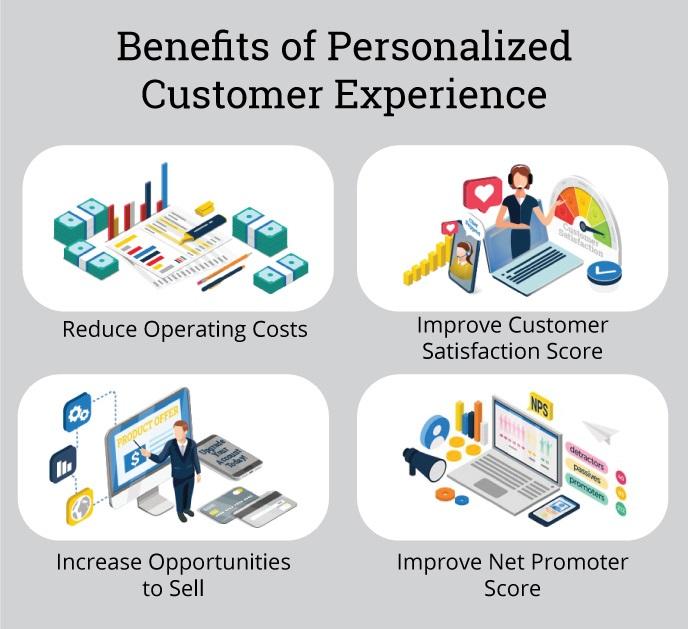In an ever-evolving financial landscape, the age-old principles of customer loyalty are undergoing a profound transformation. As traditional notions of bank-customer relationships give way to a new era defined by digital innovation and shifting consumer expectations, financial institutions are faced with the challenge—and opportunity—of reinventing loyalty. Gone are the days when loyalty was merely a byproduct of convenience; today, it embodies a more intricate tapestry woven from trust, personalization, and engagement. This article explores the roadmap that banks can follow to forge lasting customer bonds, delving into the strategies that are not only reshaping their identity but also redefining the very essence of what it means to be a loyal customer in the 21st century. Join us as we uncover the pivotal elements that can drive loyalty forward, ensuring that banks remain relevant and connected in an increasingly complex world.
Building Emotional Connections Through Personalized Experiences
In today’s competitive landscape, banks must recognize that a one-size-fits-all approach no longer resonates with their customers. To forge deeper connections, financial institutions need to harness data strategically and leverage it to create tailored experiences that speak to individual needs. By understanding customer behavior, preferences, and life milestones, banks can develop personalized solutions such as customized financial products, targeted offers, and even specific communication strategies. This not only enhances customer satisfaction but also builds a sense of loyalty that goes beyond mere transactions.
Moreover, incorporating emotional intelligence into customer interactions can transform a mundane banking experience into a memorable journey. Prospective strategies may include:
- Personalized financial advisories: Offering guidance and support that aligns with personal goals.
- Interactive digital platforms: Engaging users through gamification and interactive tools.
- Exclusive customer events: Hosting workshops or webinars tailored to customer interests, fostering a community feel.
By embracing these practices, banks not only cultivate a stronger emotional bond with their customers but also set the stage for a mutually beneficial relationship that enhances retention and customer advocacy.

Harnessing Technology for Seamless Customer Engagement
In today’s digital landscape, integrating advanced technologies is pivotal for fostering deeper connections with customers. Banks have the opportunity to leverage data analytics, artificial intelligence, and personalized communication tools to enhance customer experiences. By understanding client behavior and preferences, financial institutions can tailor their services and products to meet individual needs. This not only reduces friction in customer interactions but also builds trust and loyalty. The use of chatbots for 24/7 support, predictive analytics for personalized offers, and mobile apps that streamline everyday banking tasks create a holistic ecosystem where customers feel valued and understood.
Moreover, facilitating seamless customer engagement requires a roadmap that emphasizes omnichannel experiences. Clients should enjoy consistent and personalized interactions across all platforms, from social media and websites to physical branches. By utilizing integrated customer relationship management (CRM) systems, banks can track customer journeys and maintain continuity in communication. This approach empowers banks to proactively address client issues and recognize opportunities for upselling, ultimately fostering enduring relationships. Below is an example of effective engagement strategies:
| Engagement Strategy | Description |
|---|---|
| Personalized Offers | Use AI to analyze spending patterns and tailor rewards programs. |
| Real-Time Support | Implement chatbots and live chat for instant assistance. |
| Customer Feedback Loops | Regular surveys and feedback solicitations to gauge satisfaction. |
| Social Media Engagement | Active presence on platforms to address queries and build community. |

Cultivating Trust and Transparency in Financial Relationships
In an era where financial institutions are often viewed with skepticism, cultivating trust has become a paramount goal for banks aiming to strengthen customer relationships. By fostering an environment where transparency flourishes, banks can encourage clients to engage more openly about their financial needs and expectations. Essential strategies to enhance trust include:
- Clear Communication: Regularly updating customers on changes in services, fees, and policies.
- Personalized Engagement: Creating customized financial solutions based on customer profiles.
- Feedback Mechanisms: Actively seeking input from customers and implementing changes based on their suggestions.
Moreover, transparency in transactions is crucial for reassurance. Providing customers with real-time insights into their account activity fosters a sense of security and accountability. To illustrate the impact of transparency, consider the following table comparing trust levels based on transparency practices:
| Transparency Practice | Trust Level (% of Customers) |
|---|---|
| Regular Financial Updates | 82% |
| Accessible Terms and Conditions | 75% |
| Clear Fee Structures | 90% |
Banks that prioritize these transparent practices are not only investing in their relationship with customers but also laying a foundation for long-term loyalty. With trust as a cornerstone, financial institutions can navigate the complexities of modern banking, empowering clients to feel secure in their financial decisions.

Innovating Rewards Programs to Enhance Customer Value
In the quest to solidify customer loyalty, banks are reimagining their rewards programs to deliver tailored experiences that resonate with customers’ unique preferences and lifestyles. By utilizing advanced data analytics and customer feedback, financial institutions can create reward structures that go beyond traditional cash back or point accumulation. These innovative programs might incorporate features such as:
- Personalized Offers: Tailoring rewards based on spending habits ensures customers receive relevant incentives.
- Experiential Rewards: Allowing customers to redeem points for exclusive events or experiences creates memorable engagements.
- Tiered Benefits: Establishing levels of engagement encourages ongoing interaction and goal-oriented saving.
Moreover, effective communication of these programs plays a crucial role in engagement. Banks can leverage multi-channel platforms to keep customers informed about their rewards status and new opportunities, fostering a sense of excitement around the benefits they can unlock. To illustrate the diversity of rewards offerings, consider the following table:
| Reward Type | Example | Customer Benefit |
|---|---|---|
| Cashback | 2% on groceries | Direct financial returns on everyday purchases |
| Experiences | Concert tickets | Creating memorable moments and exclusive access |
| Travel Rewards | Free hotel stays | Incentives that enhance travel experiences |
Wrapping Up
as we navigate the ever-evolving landscape of customer expectations and technological advancements, banks stand at a pivotal crossroads. Reinventing loyalty is not merely about offering rewards or services; it’s about fostering genuine connections and understanding the unique needs of each customer. By embracing innovation, prioritizing transparency, and nurturing relationships, financial institutions can transform loyalty from a transactional concept into a lasting bond.
As we step into this new era, the roadmap to enduring customer loyalty will require foresight, adaptability, and a commitment to putting customers at the heart of every decision. The banks that succeed will not only thrive financially but will also create communities of loyal patrons who feel valued and understood. The journey is ongoing, but the destination—where customers are not just clients but cherished partners—offers a promising horizon for all stakeholders involved.
